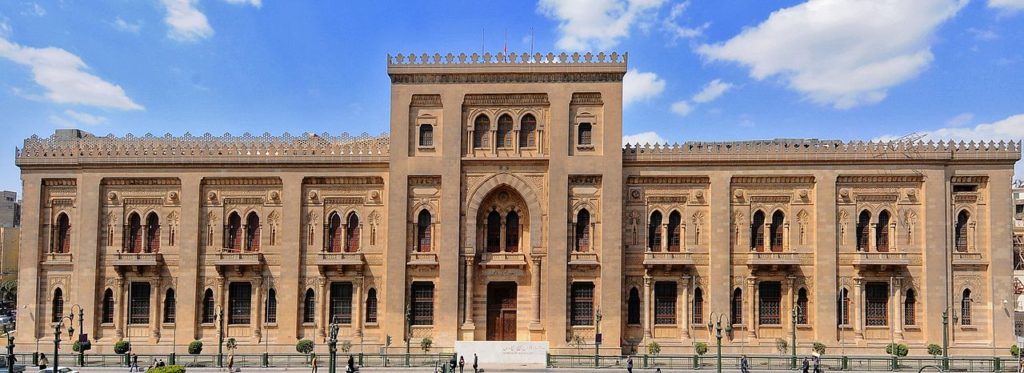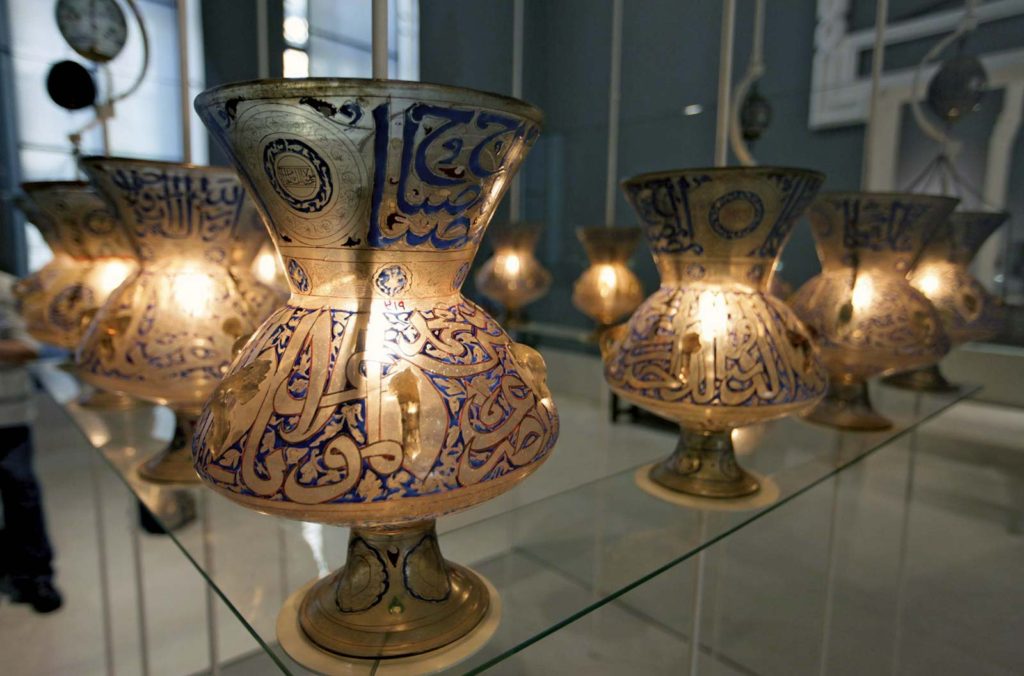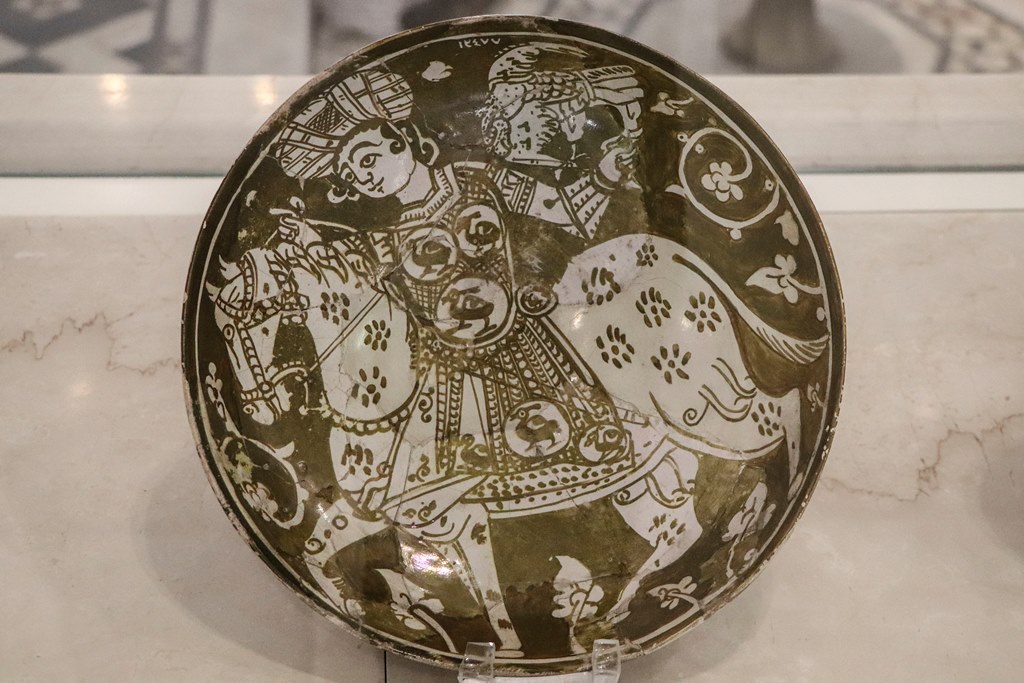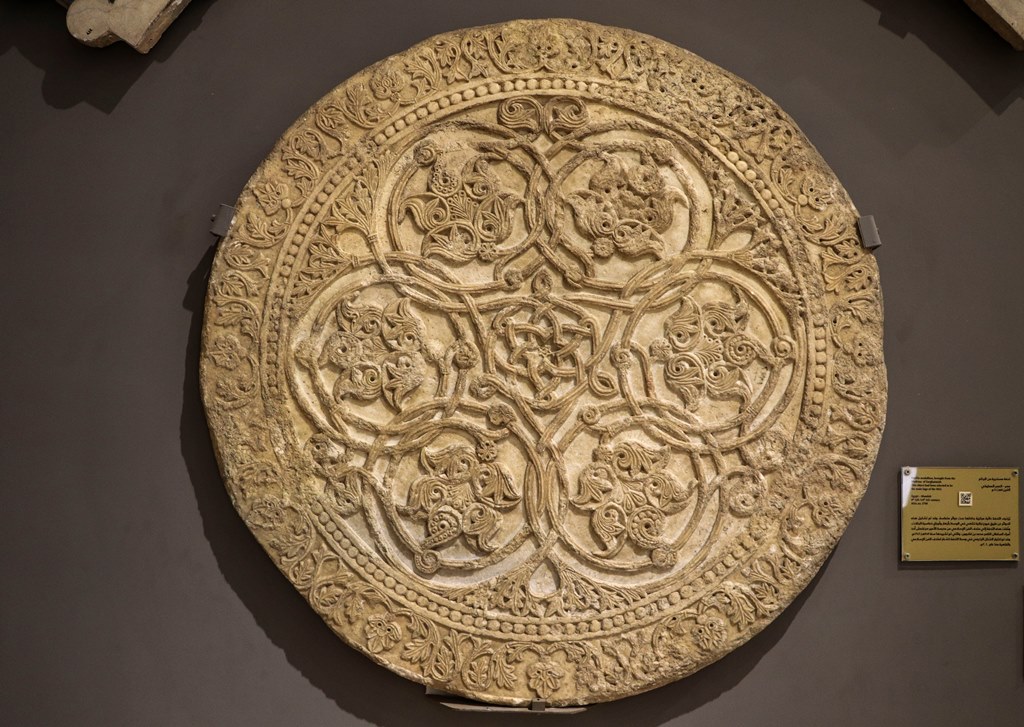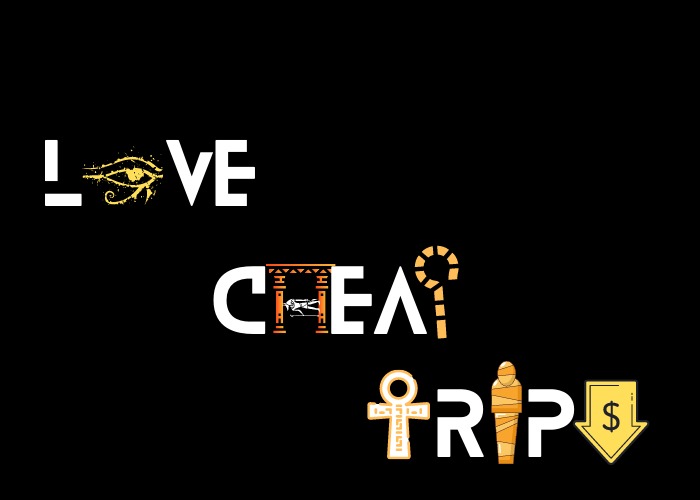The Museum of Islamic Art in Cairo is considered one of the greatest museums in the world, with its exceptional collection of rare woodwork and stucco, as well as metalwork, ceramics, glass, crystal and textiles from all eras. , From all over the Islamic world.
In recent years, the museum has displayed about 4,500 artifacts in 25 halls, but it contains more than 100,000 items, and the rest is in storage. The collection includes rare manuscripts from the Qur’an, with some calligraphy in silver ink, on elaborately bordered pages.
The museum conducted archaeological excavations in the Fustat region and organized a number of national and international exhibitions. The museum closed for renovations in 2003, and reopened 8 years later, in August 2010. The restoration cost nearly $ 10 million.
Although the recognition of Egyptian Pharaonic art was indicated in Cairo through the establishment of the Department of Egyptian Antiquities and the Egyptian Museum in 1858, the appreciation of Islamic art was delayed. Khedive Ismail Pasha approved a proposal to establish a museum of Islamic art in the yard of the Baybars Mosque, but this did not happen until 1880, when Khedive Tawfiq ordered the Ministry of Endowments to establish it.
Julius Franz, an Austrian scholar of Hungarian origin, head of the technical department of endowments, suggested in 1881 that the Fatimid Caliph al-Hakim mosque, adjacent to Bab al-Futuh, be the temporary residence of the Fatimid caliph. Museum. Accordingly, a portico in the eastern portico was furnished, initially consisting of 111 architectural pieces taken from other artifacts.
Things improved in the same year when Khedive Tawfiq approved the “Arab Antiquities Committee,” whose tasks included managing the Arab Museum, supplying it with collections, and preserving antiquities. As a result, the halls of the mosque were filled with flood. In 1884, a two-story building was constructed in the courtyard to house a collection of 900 pieces, although its staff consisted of a curator and a door keeper.
By order of Khedive Ismail Pasha in 1880, rare artifacts from the Islamic era began to be collected in the Al-Hakim Mosque. The Council for the Preservation of Arab Antiquities, established in 1881 in cooperation with the Ministry of Endowments, supervised the Arab Antiquities House, as it was known at the time, until 1930 when the museum was transferred to the Ministry of Education.
In 1887 Max Herz, also Austro-Hungarian, replaced Julius Franz, and began making many changes. The name of the museum was suggested at that time as a gallery of Arab antiquities. By 1895, the collection numbered 1,641, and the new building became very crowded, so the endowments were required to build a larger museum. In 1899 the foundations of the largest current building were laid in the Bab al-Khalq neighborhood in Cairo.
Designed by Alfonso Manescalo, the new and current building was completed in 1902 in a new Mamluk style, with the upper floor housing the National Library. The old museum in Al-Hakim was demolished in the 1970s, while the mosque there was under restoration.
The museum acquired only from mosques and public buildings in its first 20 years. Then it undertook its first excavation in 1910 in the vicinity of Doronka in Upper Egypt and a second excavation south of Cairo uncovering a section of the city of Fustat (first Islamic capital of Egypt).
The collections, amounting to 7082 artefacts, were transferred to their current building, when the present museum was inaugurated in December 1903. In 1952, the name of the museum was changed to the ‘Museum of Islamic Art’ to reflect the scope of the collection: objects produced in the Islamic world and dating from the beginning of the Islamic era (AD 7th century) to the end of the AD 19th century. The number of recorded objects has now reached 103,000.
By 2003 the Museum of Islamic Art’s collection had swelled to more than 100,000 objects, making the exhibitions cramped and difficult for visitors to navigate. The Egyptian government elected to renovate and reorganize the museum, a seven-year project that was carried out in consultation with the Islamic art department of the Louvre and the Aga Khan Trust for Culture. The redesigned museum, which opened to visitors in 2010, displays only a small selection from the entire collection, with one wing devoted to Egyptian exhibits and another devoted to art from the rest of the Islamic world.
